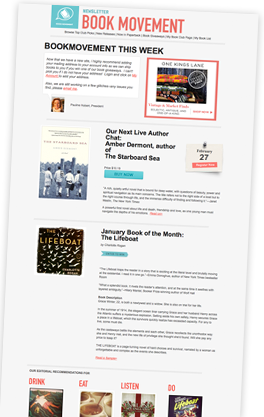BKMT READING GUIDES
Dog Driven
by Terry Lynn Johnson
Hardcover : 240 pages
0 club reading this now
0 members have read this book
Winning ...
Introduction
McKenna Barney is trying to hide her worsening eyesight and has been isolating herself for the last year. But at the request of her little sister, she signs up for a commemorative mail run race in the Canadian wilderness—a race she doesn’t know if she can even see to run.
Winning would mean getting her disease—and her sister's—national media coverage, but it would also pit McKenna and her team of eight sled dogs against racers from across the globe for three days of shifting lake ice, sudden owl attacks, snow squalls, and bitterly cold nights.
A page-turning adventure about living with disability and surviving the wilderness, Dog Driven is the story of one girl’s self-determination and the courage it takes to trust in others.
Excerpt
Chapter One Whoever’s behind me is coming fast. I peek over my shoulder and see a blurry line of shapes bearing down. Mustard glances back too, then faces forward and digs in. He’s so cocky. He hates getting passed. An unspoken message travels through the whole team and they surge forward together. I love how the speed comes up through my feet. Cold air darts through cracks in my neck warmer. I squint into the wind. “Gee over, Mustard. Don’t be rude. Attagirl, Twix.” I have an eight-dog team, so my front-runners are at the edge of my visual range. All I can see of my leaders are furry shapes. It’s as though my sunglasses are coated in Vaseline. The bright sun compounds the issue. When it reflects off the snow, it hurts my eyes, even with my dark shades. The sound of synchronized panting grows louder behind me. “Trail!” a boy’s voice calls. I have just enough time to angle my sled to the right before his dogs come loping up beside me. They move along my sled, then shoulder past it to my dogs. Saga and Haze both stick their faces directly in the way, stretching their necks for a good sniff. I cringe. Sixteen dogs running this close beside one another at ten miles an hour can make a nice tangled ball in a blink. “Ahead!” I call, trying to keep the embarrassment out of my voice. Why can’t my dogs behave like everyone else’s when we’re out in public? I’m driving savages. I watch the other team. Focused ahead, no nonsense, passing like pros. I stare at the musher as he glides by. He’s near my age, or maybe a junior. And he’s wearing some kind of war uniform that looks like it came out of his great-great-grandfather’s closet. “Ma’am,” he says. He doesn’t even watch his dogs to make sure they’re going straight, just turns backwards on the runners and bows at me. Bows. “Hey, Retro,” I call. “Why bother? Now I’m going to have to pass you!” He laughs and then he’s out of my range. I’m left with the sounds of the trail—the shush of the runners gliding over sun-softened snow, then the clacking noise they make on the harder, shaded sections of trail. The necklines tinkle, and the wind whistles. I could never run this fast on my own. Never feel the clean bite of air filling up my nostrils. Filling me up. I’m never as free as I am out here behind this team. My gaze roves up and down my dogs. Sumo’s dipping snow already but keeping pace. The fluorescent strips I’ve stitched along the backs of the dog harnesses make them stand out, especially on white dogs like Damage and Haze. Without the strips I can hardly tell them from a snowbank. But the real trouble will start at dusk, when everything turns into black blobs, fluorescent strips or not. A wide-open expanse appears. My team goes down the bank and then moves onto the frozen lake. There’s a commotion ahead; I hear it before I see it. Two mushers are yelling. “Grab your leaders!” “Sorry! I’m sorry!” Dogs barking. Their teams flounder in the snow. I arrive just as the dogfight breaks out. I throw down my snow hook, wondering what to do next. Should I go help? No, I’ll surely give myself away, stumbling over dogs. My team shrieks and lunges to get closer to the action. I’m hesitant to leave the sled in case Sumo pops the hook and we have three teams tangled. But I can’t tell what’s going on from back here. I creep closer, moving up beside my leaders. The mushers are grabbing armfuls of dogs and tugs. “They wouldn’t listen!” A girl wearing yellow wind pants struggles with a dog as if she’s never untangled a dog team before. “What are you doing?” It’s the retro boy who passed me. “Unclip the tug or my dog will get pinched!” “This one?” “No, your point dog! Hurry! Yoda, enough!” His wheel dog, not even in the tangle, is screaming so loud now, it’s hard for me to think. Which is why I dive into the fray. I reach for the girl’s leggy point dog, flicking off my mitts so my bare fingers are ready. Once I’ve grabbed the dog, I go by instinct. Unclip the tug, flip the line under, then reclip her dog. It’s all automatic and takes about two seconds. The line is still tangled. I walk backwards a few steps with the tugs, straightening the leaders, and squint at the gangline. There. A neckline needs to be unclipped. Once I’ve got the leaders untangled, I have to hold the leggy dog’s collar to prevent him from turning around. It’s satisfying to know that my dogs aren’t the worst brats ever. I peer at my team but can see only a line of crazed, hopping mongrels. I’m too far away to tell if the snow hook is coming loose. Please don’t come loose. My feet sink through the crust of snow and I slop around in slush. “You want to get them going,” I tell the girl. “I’ll hold them out.” She seems to suddenly come out of her fog and leaps onto her sled. “Hike up!” she yells, and the dogs pitch forward, picking up speed. Her sled zips past me, throwing up a rooster tail of slush. “Thanks,” the boy says. “I think she’s new.” I feel a nose shoving at my butt. I turn and recognize the black and silver markings of the boy’s lead dog. But then I do a double take and peer closer. Her eyes! “What’s wrong with your dog?” “What?” The boy looks up, then relaxes. “Oh, you mean Zesty. Yeah, she’s blind as a bat. Anyway, thanks for your help.” “You . . . your lead dog . . . you have a blind lead dog?” “She’s the best. Hey, love to chat, but should we get going? You know. Race.” I peer intently into Zesty’s face. She’s focused on the departing team, ears erect, body tightly coiled. She appears to be watching, but her eyes are fully clouded over. She swivels her face toward me as if sensing I’m staring. “Your team!” I jerk my gaze up. The boy lunges for my sled as it shoots past him. His feet get bogged down in the slush. He misses. I have one chance. I try to line myself in the right place but it’s going to be tight. I can’t see the sled clearly, and my depth perception is off. How close is it? Where is that handlebar? My dogs rush past me as I lean over, desperate, reaching . . . reaching. Bam! My bent arm hooks the handlebar. I swing up onto the runners. Step on brake. Lean down to where the snow hook should be. There it is. Snag it up. Set it in its cradle. Straighten, focus ahead. Adrenaline still pumping. I can feel my dogs smiling from here. I told him I’d pass him.Discussion Questions
1: In Dog Driven, we learn that mushers need to bring specific items in their sleds to comply with race rules. What luxury items would you also want to bring with you?2: McKenna has a dog on her team who is often vocal. Even though dogs don’t actually talk, how does McKenna know how they are feeling? And how do the dogs know what McKenna is feeling? Would it be different for Guy’s sight-impaired dog, Zesty? If so, how?
3: Scattered throughout the story are samples of contemporary letters mixed with historical letters. Why do you think the author wrote it that way? What does it show of the historical significance of dogsledding?
Book Club Recommendations
Recommended to book clubs by 0 of 0 members.
Book Club HQ to over 90,000+ book clubs and ready to welcome yours.
Get free weekly updates on top club picks, book giveaways, author events and more








